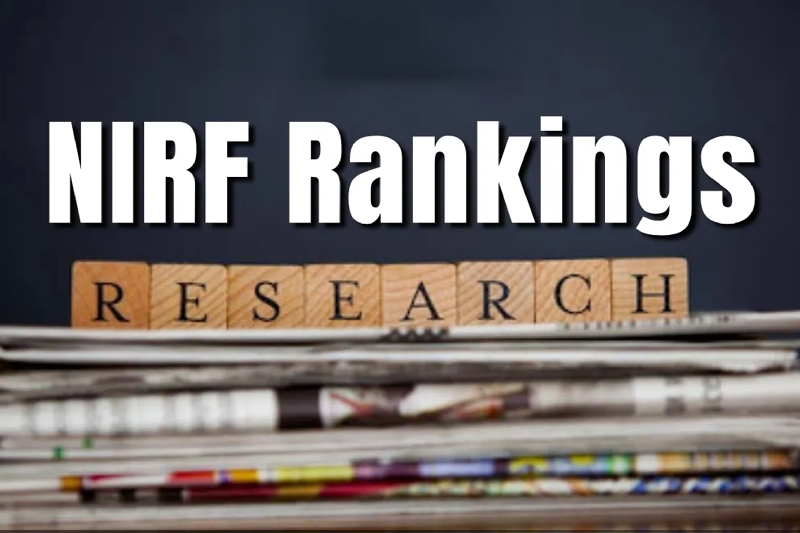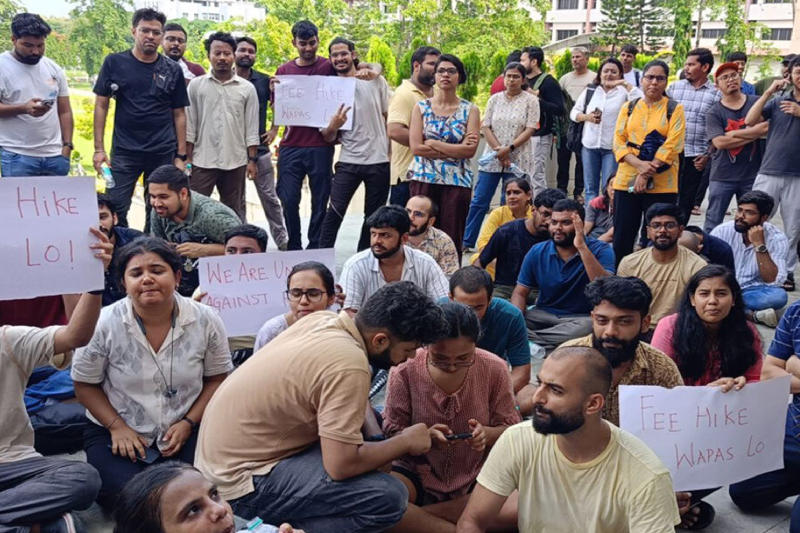
NIRF Rankings 2025: Key Changes, New Parameters, and What It Means for Higher Education
The National Institutional Ranking Framework (NIRF) 2025 rankings are set to be released in the first week of August, as confirmed by the National Board of Accreditation (NBA). The final announcement will follow the Ministry of Education’s official confirmation. With the spotlight again on India’s higher education institutions, this year’s edition brings a series of critical updates to the evaluation framework—some of which are expected to significantly impact how institutions are assessed and ranked. What's New in NIRF 2025?
One of the most notable additions this year is introducing a new evaluation category aligned with the United Nations’ Sustainable Development Goals (SDGs). Institutions will now be assessed on their contributions toward sustainability, which reflects the global shift toward environmentally and socially responsible educational practices.
Another significant reform has been introduced under the “Research and Professional Practices” parameter. For the first time since its inception, the NIRF framework will apply negative weightage to retracted research papers. NBA Chairperson Anil Sahasrabudhe confirmed that a formula has been devised to penalize institutions based on the number or percentage of retracted publications.
While the penalty imposed this year will be minor, Sahasrabudhe stated that “the gravity of negative scoring would increase” in the future if the problem of research retraction continues. This addition signals a stricter stance on research integrity and aims to discourage unethical academic practices.
How NIRF Rankings Are Computed
The NIRF ranks institutions across India using five broad parameters:
- Teaching, Learning and Resources (TLR)
- Research and Professional Practices (RP)
- Graduation Outcomes (GO)
- Outreach and Inclusivity (OI)
- Perception (PR)
Sub-parameters and data-driven indicators support these. Each year, the process begins with finalizing the year’s methodology, followed by pre-registration and complete registration phases for institutions.
Institutions must submit detailed data via the Data Capturing System (DCS). This data covers student and faculty details, research output, citations, patents, funding, and infrastructure. For transparency, institutions must also publish these datasets on their websites.
Following data submission, a validation phase begins. Here, the data is opened to the public and stakeholders, who can provide comments. Institutions may be asked to revise their data based on the feedback. An independent survey captures peer perception, rounding off the process before the final rankings are announced.
Reforms Introduced in 2024 Set the Stage
Many of this year’s ranking changes build upon reforms introduced in NIRF 2024. Last year’s updates included:
- The addition of two new institutional categories: Open Universities and State Public Universities.
- A new emphasis on Innovation as a separate scoring metric to promote inventive academic and administrative practices.
- A shift in the Faculty-Student Ratio (FSR)—revised to 1:10 for medical institutions and 1:20 for State Public Universities.
- Self-citations were excluded from research citation metrics, ensuring a more accurate picture of academic influence.
The 2024 framework also took cues from the G20 Mission LiFE (Lifestyle for Environment) by beginning to integrate sustainability indicators. Institutions were evaluated on their implementation of:
- Multiple entry and exit options for students,
- Inclusion of Indian Knowledge Systems, and
- Offering instruction in multiple regional Indian languages.
These inclusions were early indicators of the now formalized SDG-focused ranking introduced in 2025.
Legal Scrutiny and Concerns Over Methodology
Earlier in 2025, the Madras High Court issued a temporary restraining order on the publication of the NIRF rankings. This was in response to a Public Interest Litigation (PIL) that questioned the reliability and methodology of the rankings. The petitioner claimed that the rankings lacked a strong foundation and could mislead students, potentially affecting the overall quality of higher education in India.
While the interim order did not stop the ranking process, it added fuel to the ongoing debate surrounding NIRF's methodology's transparency, accountability, and trustworthiness. Additionally, academic studies have pointed out gaps in the ranking framework, including:
- The lack of mechanisms to evaluate teaching quality,
- Absence of student evaluations as part of the scoring system, and
- Failure to incorporate alum feedback.
These concerns highlight the need for the NIRF system to evolve beyond quantitative metrics and address qualitative aspects of education.
Looking Ahead
As India’s higher education sector becomes increasingly competitive and global-facing, the changes in NIRF 2025 signal a clear move toward more ethical, sustainable, and data-driven evaluation models. Including SDG-based assessments and negative scoring for retracted research marks a critical step in ensuring academic integrity and institutional responsibility.
At the same time, the legal and academic critiques underscore the importance of ongoing reforms. Stakeholders—from educators and policymakers to students and researchers—will watch closely how these updates influence institutional behavior, reputation, and student choices in future years.
Conclusion
The NIRF 2025 rankings are about determining which institution stands at the top and setting the tone for what matters in Indian higher education—sustainability, research ethics, innovation, and transparency. With these new changes, the framework is slowly but surely aligning itself with the evolving educational landscape within India and globally.


